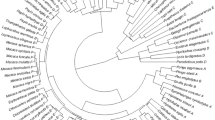Abstract
The characteristic long forelimbs of gibbons are a consequence of elongation of all segments (hand, forearm, and arm) but especially the forearm. While the hand is limited in size by its prehensile role, both the arm and the forearm do not seem to be directly limited in a similar manner. Why is the elongation concentrated specifically in the forearm? One hypothesis, originally applied to cursorial ungulates, relates to the need to enhance angular velocity during the swing phase at a minimum cost by distributing the heaviest forelimb loads proximally near the shoulder joint. This appears to be a plausible explanation despite complicating factors associated with competing functions of the forelimb during the support phase of arm-swinging and the fact that the animal behaviorally adjusts inertial properties of its forelimb by flexing it while reaching for the support. In order to test this hypothesis, the forelimb was modeled as a series of uniform cylinders from which the radii of gyration (k) were calculated. After converting into relative values (%k), they were compared (1) interspecifically, among two hylobatids, an orangutan, common chimpanzee, and gorilla, and (2) hypothetically, among imaginary gibbons with brachial indices extending beyond the range found in hylobatids. The results of both tests were equivocal, suggesting that forelimb mass distribution may not be the dominant factor influencing elongation of the forearms in gibbons. Even though gibbons are unique in their great dependence upon arm-swinging, efficient generation of high angular velocities during the swing phase does not appear to be the overriding function beyond others related to support, propulsion, and prehension.
Similar content being viewed by others
References
An, K. N., Takahashi, K., Harrigan, T. P., and Chao, E. Y. (1984). Determination of muscle orientations and moment arms.J. Biomech. Eng. 106: 280–282.
Dempster, W. T., and Gaughran, G. R. L. (1967). Properties of body segments based on size and weight.Am. J. Anat. 120: 33–54.
Fleagle, J. G. (1974). Dynamics of a brachiating siamang.Nature 248: 259–260.
Fleagle, J. G. (1977a). Brachiation and biomechanics: The siamang as example.Malay. Nat. J. 30: 45–51.
Fleagle, J. G. (1977b). Locomotor behavior and skeletal anatomy of sympatric Malaysian leaf-monkeys (Presbytis obscura andPresbytis melalophos).Yrbk. Phys. Anthrop. 20: 440–454.
Hildebrand, M. (1985). Walking and running. In Hildebrand, M., Bramble, D. M., Liem, K. F., and Wake, D. B. (eds.)Functional Vertebrate Morphology, Belknap Press, Cambridge, Mass., pp. 38–57.
Hildebrand, M., and Hurley, J. P. (1985). Energy of the oscillating legs of a fast-moving cheetah, pronghorn, jackrabbit, and elenhant.J. Morphol., 184: 23–31.
Jensen, R. H., and Davy, D. T. (1975). An investigation of muscle lines of action about the hip: A centroid line approach vs the straight line approach.J. Biomech. 8: 103–110.
Jungers, W. L. (1976).Osteological Form and Function: The Appendicular Skeleton of “Megaladapis,” A Subfossil Prosimian from Madagascar (Primates, Lemuroidea), Ph.D. thesis, University of Michigan, Ann Arbor.
Jungers, W. L. (1979). Locomotion, limb proportions, and skeletal allometry in lemurs and lorises.Folia Primatol. 32: 8–28.
Jungers, W. L., and Stern, J. T. (1984). Kinesiological aspects of brachiation in lar gibbons. In Preuschoft, H., Chivers, D. J., Brockelman, W. Y., and Creel, N. (eds.),The Lesser Apes. Evolutionary and Behavioural Biology, Edinburgh University Press, Edinburgh, pp. 119–134.
Keith, A. (1919).The Engines of the Human Body. Williams and Norgate, London.
Maynard Smith, J., and Savage, R. J. (1956). Some locomotory adaptations in mammals.J. Linn. Soc. Lond. Zool. 42: 603–622.
Morbeck, M. E., and Zhilman, A. (1988). Body composition and limb proportions. In Schwartz, J. H. (ed.),Orang-utan Biology, Oxford University Press, Oxford, pp. 285–297.
Myers, M. J., and Steudel, K. (1985). Effect of limb mass and its distribution on the energetic cost of running.J. Exp. Biol. 116: 363–373.
Parsons, P. E., and Taylor, C. R. (1977). Energetics of brachiation versus walking: A comparison of a suspended and an inverted pendulum mechanism.Physiol. Zool. 50: 182–188.
Preuschoft, H., and Demes, B. (1984). Biomechanics of brachiation. In Preuschoft, H., Chivers, D. J., Brockelman, W. Y., and Creel, N. (eds.),The Lesser Apes. Evolutionary and Behavioural Biology, Edinburgh University Press, Edinburgh, pp. 96–118.
Rumbaugh, D. M., Wolkin, J. R., Wilkerson, B. J., and Myers, R. H. (1976). A hybrid ape (Hylobates lar moloch × Symphalangus syndactylus).Lab. Primate Newsl. 15: 32.
Schultz, A. H. (1930). The skeleton of the trunk and limbs of higher primates.Hum. Biol. 2: 303–438.
Schultz, A. H. (1933). Die Körperprotionen der erwachsenen catarrhinen Primaten, mit spezieller Berücksichtigung der Menschenaffen.Anthropol. Anzeig. 10: 154–185.
Shafer, D. A., Myers, E. H., and Saltzman, D. (1984). Biogenetics of the siabon (gibbon-siamang hybrids). In Preuschoft, H., Chivers, D. J., Brockelman, W. Y., and Creel, N. (eds.),The Lesser Apes. Evolutionary and Behavioural Biology, Edinburgh University Press, Edinburgh, pp. 486–497.
Takahashi, L. K. (1987).Morphometric and Allometric Analyses of the Forelimbs of Hylobates and Ateles, Ph.D. thesis, University of Chicago, Chicago.
Takahashi, L. K. (1989a). Forearm elongation in arm-swinging primates.Am. J. Phys. Anthropol. 78: 313 (abstr.).
Takahashi, L. K. (1989b). Morphological basis of arm-swinging; Multivariate analyses of the forelimbs ofHylobates andAteles.Folia Primatol. 54: 70–85.
Taylor, C. R., Shkolnik, A., Dmi'El, R., Baharav, D., and Borut, A. (1974). Running in cheetahs, gazelles, and goats: energy cost and limb configuration.Am. J. Physiol. 227: 848–850.
Zhilman, A. (1984). Body build and tissue composition inPan paniscus andPan troglodytes with comparisons to other hominoids. In Susman, R. L. (ed.)The Pygmy Chimpanzee: Evolutionary Morphology and Behavior, Plenum Press, New York, pp. 179–200.
Author information
Authors and Affiliations
Rights and permissions
About this article
Cite this article
Takahashi, L.K. Forearm elongation in gibbons: Hypothesis and preliminary results. International Journal of Primatology 12, 599–614 (1991). https://doi.org/10.1007/BF02547672
Received:
Revised:
Issue Date:
DOI: https://doi.org/10.1007/BF02547672




